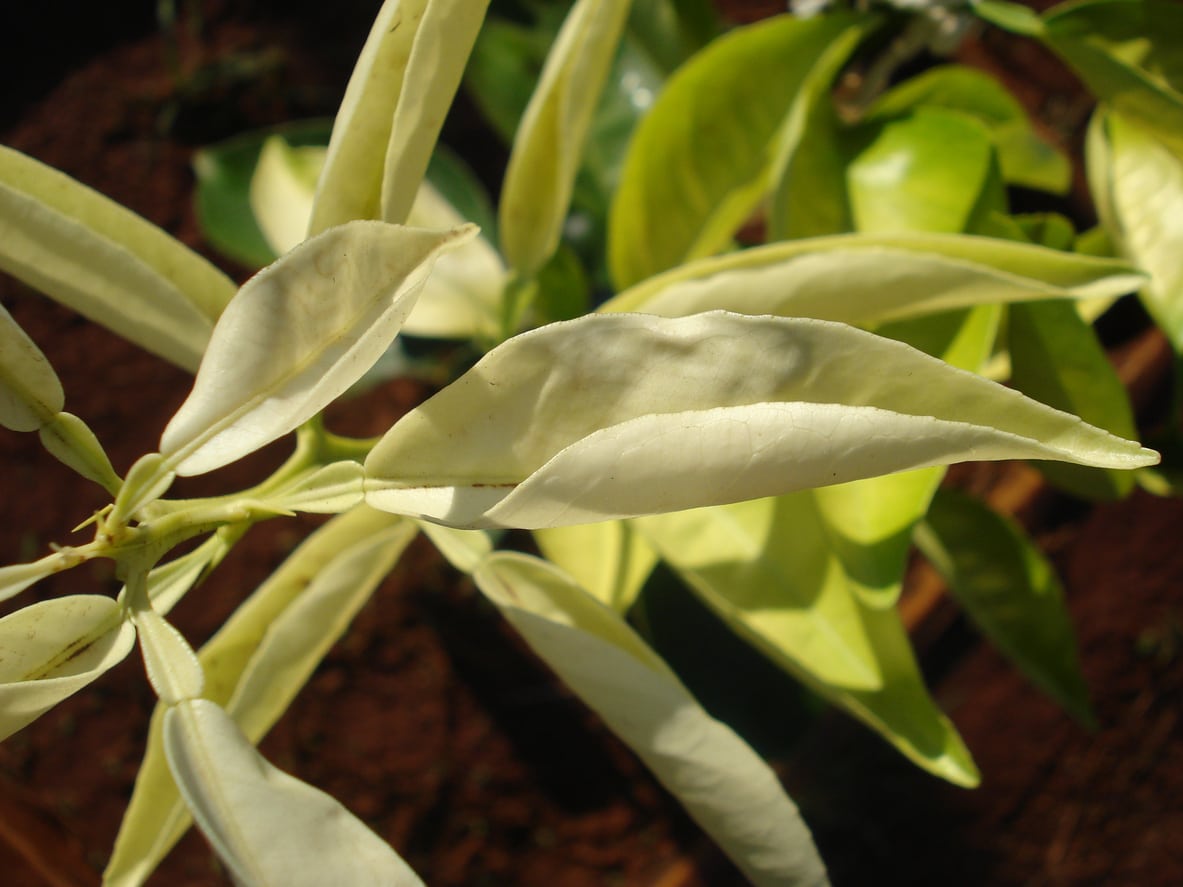Trees And Weed Killer – Herbicide Tree Injury Prevention And Treatment

Herbicides have become the most common solution to weed control, especially for commercial farms, along industrial areas, and roadways and for large scale landscapes where manual cultivation is costly and time consuming, but trees and weed killer don’t often mix. Accidental damage from herbicide use is, unfortunately, sometimes an unintended consequence.
Sources of Tree Herbicide Injury
While the target of herbicides, the weeds, is often taken care of, there is may often be accidental herbicide injury done to trees and other plants too. Tree herbicide injury is difficult to diagnose since it mimics damage done by disease and insects. Tree damage from herbicides may be from incorrect or inappropriate application of from drift of dry or liquid chemicals applied to trees nearby. Herbicides may also be taken up by a tree’s roots into its vascular system from nearby treatments. Soil sterilants are often applied to graveled areas such as driveways and fence lines. Then trees that are near these areas absorb the herbicide, resulting in herbicide injury in trees. Sometimes this injury may not occur for years after the application simply because the chemical may remain in the soil, and as tree roots grow, they come into contact with it.
Treating Trees Affected by Weed Killer
Treating trees affected by weed killer is as difficult as diagnosing it as the culprit. The reason is because there are many types of herbicide all comprised of different and varied chemicals. Without a costly chemical analysis, treatment may be much about guess work. Distorted leaves, stunted growth, necrosis, premature leaf loss, branch dieback, leaf browning, yellowing, marginal leaf scorching, and even tree death are all signs of herbicide injury. If an injury is the result of drift on foliage and is discovered immediately, the tree can be sprayed liberally with water which will lessen the effects, at least on the foliage. In the case of soil applied herbicide, do not apply water. Remove contaminated soil if possible. Treatment is dependent upon the type of herbicide. If it is a pre-emergent type, usually nothing needs to be done. If it is a soil sterilant that is immediately taken up by the roots, incorporate the soil with activated charcoal or organic material. This helps to absorb the herbicide. If you know what type of herbicide has been used, contact the manufacturer for additional information. Also, a certified arborist can be of assistance. In order to really treat the trees it is necessary to know what type of weed killer has been used.
Gardening tips, videos, info and more delivered right to your inbox!
Sign up for the Gardening Know How newsletter today and receive a free copy of our e-book "How to Grow Delicious Tomatoes".

Amy Grant has been gardening for 30 years and writing for 15. A professional chef and caterer, Amy's area of expertise is culinary gardening.
-
 10 Common Composting Problems That Can Spoil Your Garden Gold – Plus Easy Fixes
10 Common Composting Problems That Can Spoil Your Garden Gold – Plus Easy FixesLearn how to troubleshoot common composting issues before they ruin your stash – from bad smells and bugs to materials not breaking down as they should.
By Susan Albert
-
 Terrifically Tubular Flowers For Hummingbirds: 9 Tube-Flowered Plants To Attract Hummers
Terrifically Tubular Flowers For Hummingbirds: 9 Tube-Flowered Plants To Attract HummersGrowing tubular flowers for hummingbirds helps you create the optimum feeding conditions for your winged friends. Here are nine tubed delights for hummers
By Tonya Barnett
-
 Best Trees For Carbon Sequestration And Climate Change
Best Trees For Carbon Sequestration And Climate ChangeLet’s keep planting trees. They are our best bet for capturing carbon and may help with our global warming issues.
By Teo Spengler
-
 7 Invasive Trees You Should Never Plant In Your Yard Or Garden
7 Invasive Trees You Should Never Plant In Your Yard Or GardenWhat are some invasive trees you should never plant in your yard? Click here to find out.
By Teo Spengler
-
 How Close Can You Plant A Tree To A Stump?
How Close Can You Plant A Tree To A Stump?Looking to plant new trees near old stumps or where stumps have been removed? Click here to learn how.
By Teo Spengler
-
 Messiest Trees That Drop Debris Everywhere
Messiest Trees That Drop Debris EverywhereWant to know which trees will create the biggest messes in your home landscape? Click here to find out.
By Amy Grant
-
 How To Get Rid Of Tree Sprouts In The Yard From Nearby Trees
How To Get Rid Of Tree Sprouts In The Yard From Nearby TreesLearn the simple way to keep pesky tree seedlings in your lawn from becoming saplings.
By Teo Spengler
-
 How To Tell How Old A Tree Is
How To Tell How Old A Tree IsEver wondered how to calculate the age of a tree? Click here to learn all about it.
By Teo Spengler
-
 When To Remove Tree Stakes From Saplings
When To Remove Tree Stakes From SaplingsA newly planted tree may grow strong when it’s staked, but don’t forget to remove the stakes when it’s stable.
By Teo Spengler
-
 Inosculation And Trees Growing Together
Inosculation And Trees Growing TogetherIf you ever see two trees that have bonded and grown together, read here to learn why and how it happens.
By Teo Spengler